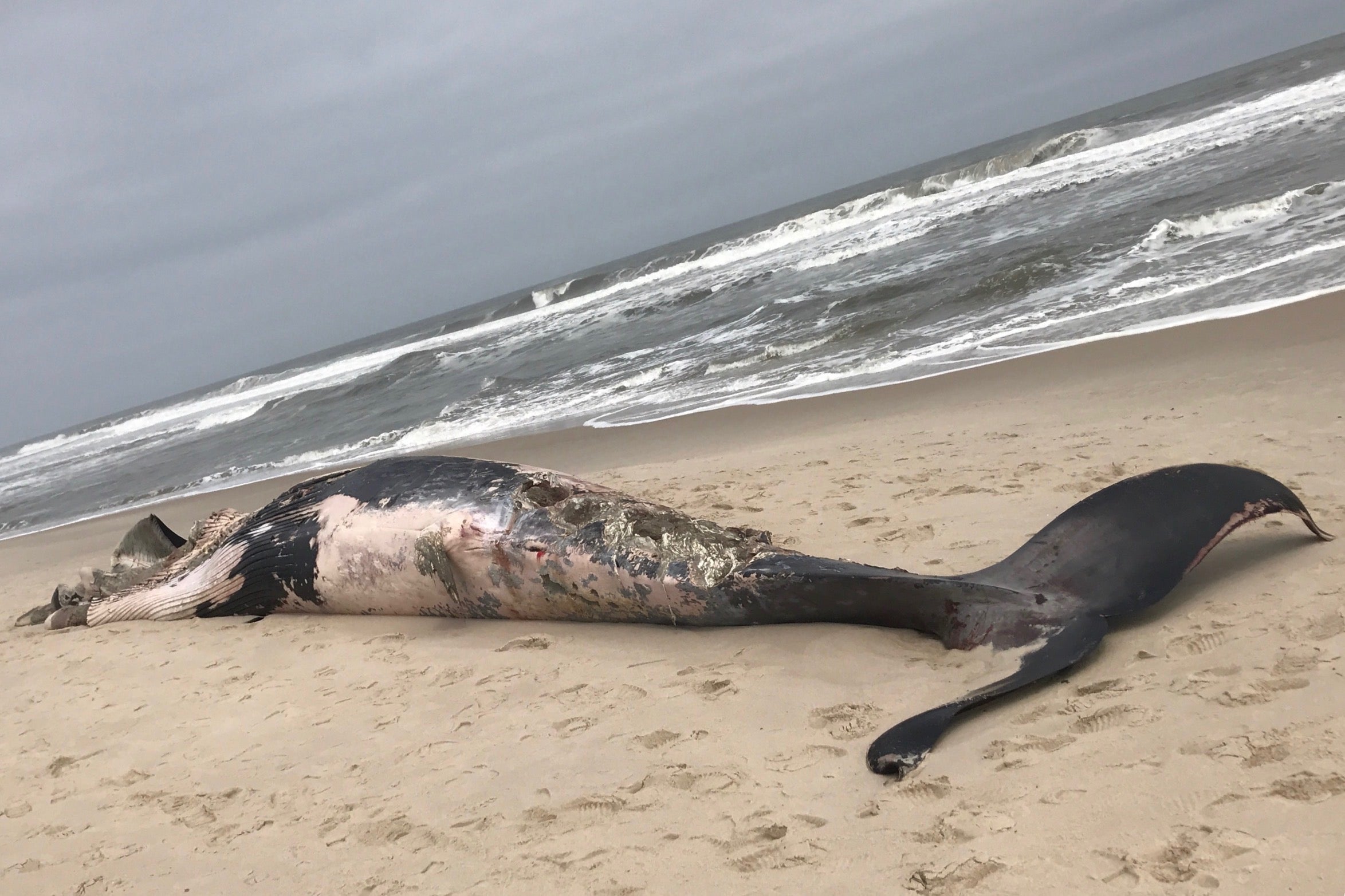Marine experts unable to determine whale’s cause of death

JSHN contributor Andrew Pero captured this image of the whale discovered Wednesday in the Chadwick Beach section of Toms River.
A whale that washed ashore Wednesday morning in Ocean County was so badly decomposed that marine mammal experts say they can’t determine its cause of death.
The 43-foot whale discovered near the shoreline in the Chadwick Beach section of Toms River had been dead for days and chewed on by sharks.
The Brigantine-based Marine Mammal Stranding Center was only able to perform a limited necropsy on the 40 to 50-ton whale, which had to be quickly cut into pieces and hauled away from the beach because it was a health hazard.
A video posted on Facebook by Brianne Liddle shows crews moving the whale Wednesday afternoon. The animal might have been a Sei whale, but its condition made even that determination difficult to make.
The discovery comes just days after a decomposing juvenile humpback whale was discovered in Delaware, where four humpbacks have stranded in less than a year, delawareonline.com reported. Four have also stranded off Virginia, and one stranded off Long Island last fall, the report said.
In New Jersey, a humpback whale was discovered on a Sea Isle City in September 2016. Then in January 2017, a rare Blainesville’s beaked whale washed ashore in Island Beach State Park. Just a few weeks later, a humpback whale was found on a newly formed sandbar off Long Beach Island.
In total, 41 dead humpback whales have been recently discovered between Maine and North Carolina, prompting the National Oceanic and Atmospheric Administration Marine Fisheries to declare an “unusual mortality event” on Thursday. That action triggers a “focused, expert investigation into the cause.”
The last time such an event was declared in the region was when bottlenose dolphins where dying along the mid-Atlantic beginning in 2013. Numerous were diagnosed with morbillivirus, a measles-like virus.
The combination of ubiquitous smartphones and social media amplification has resulted in numerous photographs and videos of whales in recent years.
Late last April, photographer and blogger Jerry Meaney snapped photos of a whale feeding near the Manasquan Inlet, which separates Ocean and Monmouth counties.
At the time, Gotham Whale, a New York City-based organization that studies and advocates for marine mammals along with educating the public, said whales were migrating north from the Caribbean for the warmer months.
“It’s a growing population in our area that we are researching and cataloging,” a spokesperson said.
Federal law requires vessels keep a distance of 100 yards from whales.
——————————————————————
The Associated Press contributed to this report.
WHYY is your source for fact-based, in-depth journalism and information. As a nonprofit organization, we rely on financial support from readers like you. Please give today.

